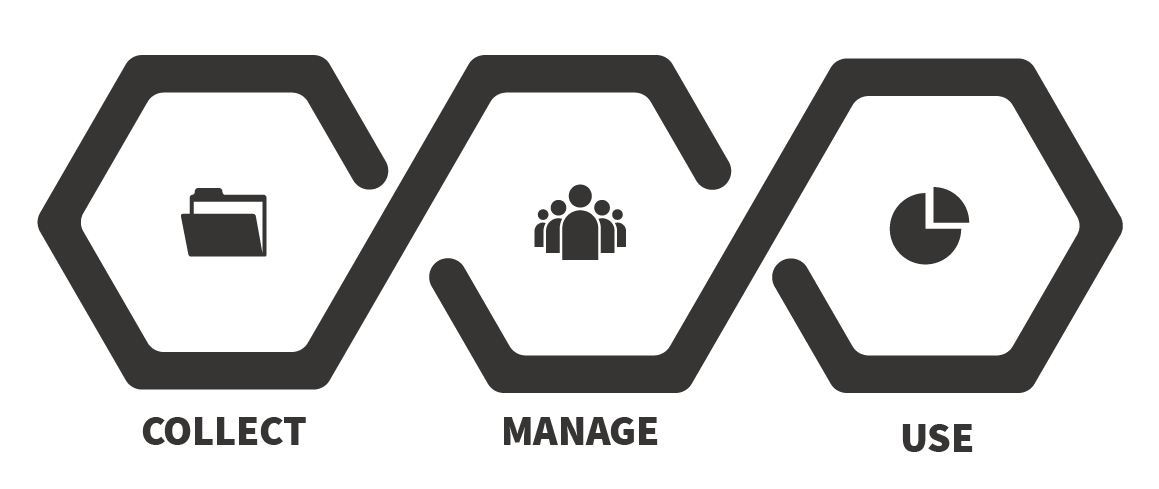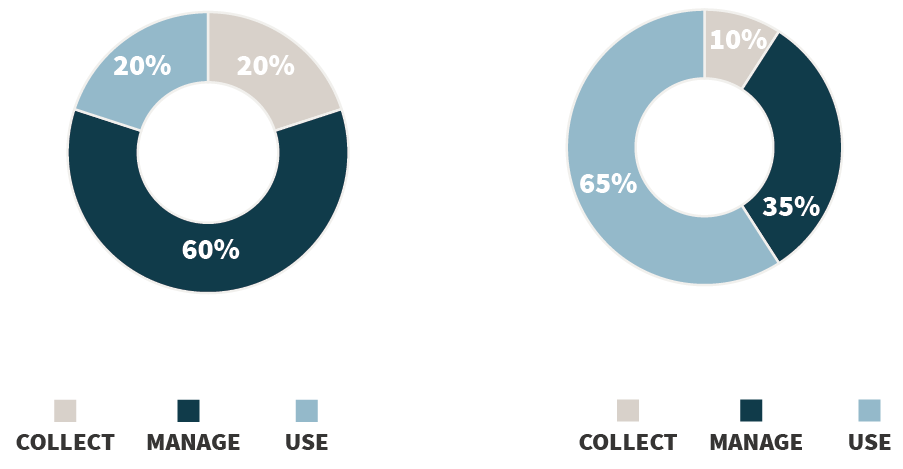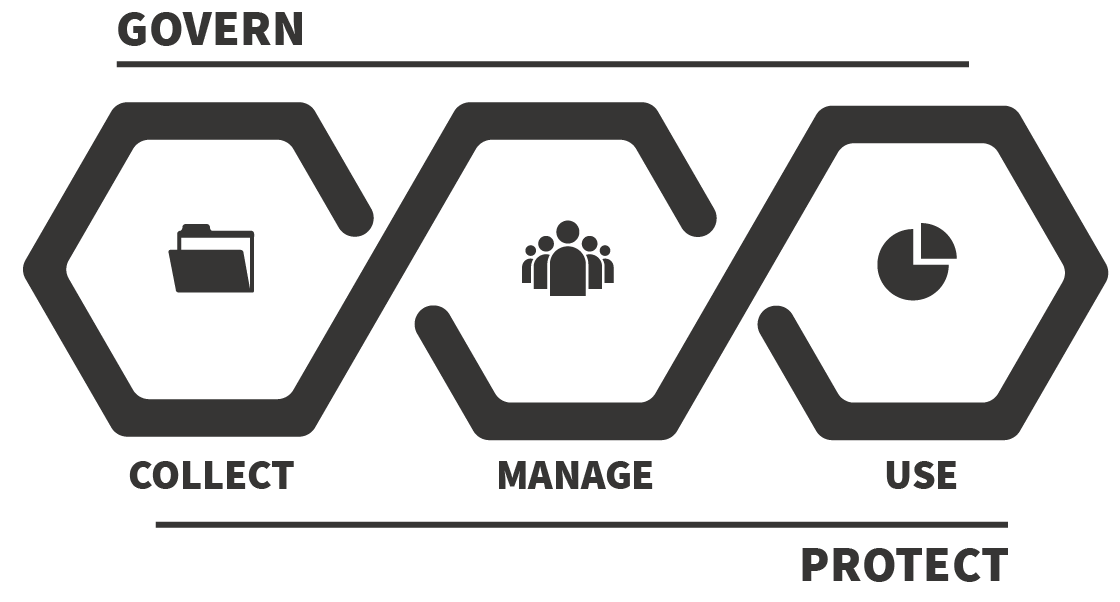
I'm sitting in a room of more than 20 executives from data, operations, marketing, and IT yesterday. Like many meetings, these leaders know their business, they've worked together for a few years, and they can go very deep into the details about their challenges as well as articulate what they want. However, it's oftentimes the path to get to that future state that's difficult to navigate.
I'm the "what if" data nerd guy in the room, and I'll preface the rest of this blog with this first observation: Every project, in every setting, is now focused on data in some way. Whether we're replacing an application from 15 years ago, envisioning a new ecosystem for market participants to engage, or simply dealing with an optimization or performance problem, the topic of data is always on the table.
The group yesterday was no different. They wanted to create a marketplace for industry participants to improve the access to reliable data and use that to drive efficiency and consistency throughout the industry. But where do they start? There are hundreds of options.
With so much expertise, history, and vision in the room, sometimes the most effective way to make decisions is to simplify what we're trying to decide. At Kingland, we use a simple decision-making framework to help facilitate the discussion and hone in on the potential requirements, which can then be prioritized.

The core question here is: What data do we need? This may be data entered by users into an application, files from legacy systems, feeds from vendors, or a digital repository of documents or agreements (unstructured data). With today's suite, data relational graph or lake style data architectures, groups can and should be more adventurous in stating what data they really need. The key is to clearly identify it and then determine how to gain access to this data, or collect it for the steps that come next.
The core question for Manage is: Can we trust the data we collect? Here we can use classic data quality questions to really get the group talking. Is the data available in a timely manner? Is the data updated as often as we need it? Is it complete or are we commonly missing data attributes? Is the data consistent if we bring it in from multiple sources or clients? Do we have clear, common definitions of the critical data? The right group of leaders will be very opinionated about all of these questions. Depending on the answers, we can prioritize capabilities to manage the data quality, or at a minimum, monitor it so we can make future decisions.
The entire reason we collect and manage data is to then use it, and the core question here is: Who needs the data and why? This category of decisions in the framework is really the most important as it drives to the value that must be delivered with any application or project. Use is all about distributing the data to the systems that need it, producing the reports that are required, or making the data available to users through search, analytics or other user interfaces.
These categories of decisions are cyclical in nature. Defining a new use case for an application allows us to shift our focus to collecting a new type of data. If we find that clients or users are complaining about data or multiple issues exist, we shift our focus to data quality practices. This is why this framework works. It provides three simple categories of discussion that a large, intelligent group can use to make their points and drive towards decisions.
Getting to alignment (not consensus) is one of the keys to moving big enterprise programs forward. Another use of this model is to discuss and agree on the relative priority of these categories.
Compare the diagrams below. The left diagram below shows one group may decide that we really have a trust issue with the data and we need to prioritize meeting time and then forecast budget primarily on managing the data. If we look at the next diagram, another project may feel like the data in a particular application or environment is fairly good, but the key for success this year is enabling distribution to key systems or user groups. The key is to use the framework to guide that relative priority, which helps future decision making.

Once we gain alignment on Collect, Manage, and Use, their relative priority, and the issues and requirements to consider, it's often a good idea to take it a step further and address two more categories of decisions: Govern and Protect.

For Govern, the question is: How will we make decisions about priority? Effectively, the steps above will help gain alignment on priority, but as time goes on, what are the rules of the road for the next series of Collect, Manage, and Use decisions? This is particularly important for new programs or complex organizations. Some may have an existing governance framework, but it's always a good idea to evaluate if it works given the type of data you're collecting, who's managing it, and the end users of the data for your application or program.
Protect is a must and answers the question: How do we protect the data? Historically this has been a blanket, technical expectation in a lot of program planning. Of course, IT will protect the data. However, from a decision-making perspective, we feel it's important to ensure data protection is discussed early and often in the decision-making process. It could be that the needs from users require very sensitive data and leaders need some extra attention to secure the data, or it could be that certain data gets prioritized because of the inherent risk of collecting it or burdensome protection requirements. The key is that leaders talk through this and again, gain alignment.
This is what enterprise data management is all about in 2019 - making key decisions about data in the context of every project, and then bringing the capabilities to the table to deliver. I've seen this framework work very well to help leaders see from a different vantage point and gain alignment. Taking a step back and thinking about what data would help drive new use cases and how to improve the confidence in the data really is one of the most important considerations in any project. It will lead to faster decision making, fewer political battles, and more efficient use of IT budgets to deliver.
These Stories on Enterprise Data Management



No Comments Yet
Let us know what you think